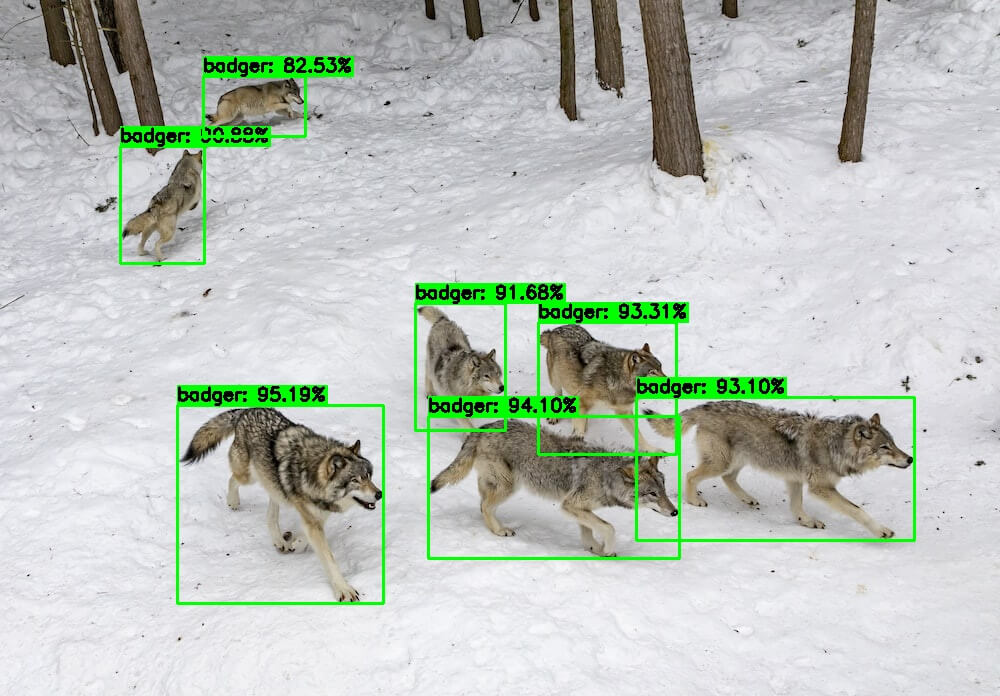Hello everyone,
just wanted to advertise here the DeepFaune initiative that I lead with Vincent Miele. We're building AI-based species recognition models for camera-trap pictures and videos, and have a cross-platform free software (Windows/Linux/Mac) to run the models on your images, on your computer (i.e. no need for cloud upload). Please visit: https://www.deepfaune.cnrs.fr
In brief:
- the model available is for the European fauna, but it can be useful beyond this to sort empty images or look for species that are found in Europe but also in other continents (i.e. wild boars). We're happy to add more species if pictures are available, and we may (or may not, time-dependent) train models for other regions if we do get enough images (in the process of doing it for savanna species).
- the detector is custom-made, achieves nearly the performance of MegaDetector (see preprint referenced below), but is much quicker
- the model also works on videos, but for a number of reasons performance is lower than on pictures. Generally, if you want to use AI-models, please use camera-traps in multi-shots trigger mode instead of videos. Works much better.
- you can define the duration below which two pictures are considered being from the same sequence of images. The model will use the information about sequences to improve predictions
- IMPORTANT: you can define the confidence threshold below which an image is considered undefined, and needs to be checked visually. The lower this threshold, the lower the number of images to be reviewed, but the higher the number of errors. The default is 0.8, which generall works well if you are ok with a 1% error rate and have a bit of time to review images (see preprint referenced above; seems like you can decrease it to 0.6 without increasing too much the error rate and saving quite some time - your call). But if you want to be super confident in your classification, increase it to >0.9 or even 0.95. Our recommendation is to initially do several runs with different thresholds to get a feel on how the model performs on your images. If you have annotated pictures you can even quantify things and find the optimal threshold for your work
- the software allows you to export a file with the predictions, or copy or move your files according to them. Please be careful if you use 'move', as it may be hard to come back to your initial file structure
- there is a 'count' feature that is experimental at this stage
- you can manually edit the predictions in the software to correct them or add a new class if you want to. Do so by typing in the name in the class field when displaying the image. Then export predictions or copy/move files
There are still plenty of improvements to be made, but we would be happy to get feedback at this stage. So please try it out, and reach out by email ([email protected])!
Simon Chamaillé-Jammes, on behalf of the DeepFaune team
follow us on Twitter: @DeepFauneCNRS
A preprint describing the initiative and providing the performance benchmarks is available there:
The software interface looks like this:

12 October 2023 11:13am
I learnt the different between a detector and a classifier when my first attempt to integrate this model resulted in the following.
On the positive side, I now know how it works and should be able to integrate it shortly :)
22 October 2023 8:15am
Great model! Works really good on the European wildlife. Thanks for sharing!
24 October 2023 8:46pm
Hello to all, new to this group. This is very exciting technology. can it work for ID of individual animals? we are interested in Ai for identifying individual jaguars (spots) and andean Bears (face characteristics). Any recommendation? contact? thanks!
German







Kim Hendrikse